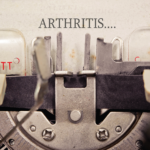Not unlike other situations involving immunity, a whole series of intricate connections link taste receptors to immune modulation. In one mouse model, activated taste buds responsible for the perception of sweetness produce the pro-inflammatory tumor necrosis factor (TNF), whereas those that identify bitter tastes produce the anti-inflammatory cytokine, interleukin 10.12 Could this finding help explain the placebo effect of bitter-tasting pills?
Salt is probably the greatest flavoring additive ever discovered. It is used in every cuisine. Salt can drive behavior, reminding us to drink more liquids or encouraging us to gorge ourselves with a particularly salty snack. Think of salted nuts—or in my case, barbeque-flavored potato chips. Although there is a need to reduce salt consumption because of its potentially deleterious effects on blood pressure, it now appears that NaCl may provide a hypothetical benefit to our host defenses.
How? Type 17 helper T (Th17) lymphocytes produce the prototype cytokine interleukin 17, as well as interleukin 21 and interleukin 22, cytokines that are pivotal in the defense against bacteria and fungi. Owing to their strong inflammatory properties, however, Th17 lymphocytes also confer susceptibility to autoimmune diseases.
Two recent studies identified salt in the induction of exaggerated Th17 responses. Modest increases in the concentration of sodium chloride markedly enhanced Th17 responses in vitro, as did a high-salt diet in vivo.13 The molecular mechanisms underlying the sensing of sodium ions and the initial activation of Th17 cells have been largely elucidated: Hypertonic salt directly activates the kinase SGK1, which stabilizes interleukin 23R and, thus, reinforces the Th17 phenotype. It also activates other molecules that induce the expression of SGK1. The Th17-modulating effects of salt were accompanied by an increased severity of experimental autoimmune encephalomyelitis in mice, as compared with the level of severity observed in the conditions with normal salt.13
Whether this finding can be extended to human autoimmune diseases remains to be seen, but in the meantime, would you mind passing me the potato chips?
 Simon M. Helfgott, MD, is associate professor of medicine in the Division of Rheumatology, Immunology and Allergy at Harvard Medical School in Boston.
Simon M. Helfgott, MD, is associate professor of medicine in the Division of Rheumatology, Immunology and Allergy at Harvard Medical School in Boston.
References
- Vambutas A, Lesser M, Mullooly V, et al. Early efficacy trial of anakinra in corticosteroid resistant autoimmune inner ear disease. J Clin Invest. 2014 Sep;124(9):4115–4122.
- McCabe BF. Autoimmune sensorineural hearing loss. Ann Otol Rhinol Laryngol. 1979 Sep–Oct;88(5 Pt 1):585–589.
- Niederkorn JY. See no evil, hear no evil, do no evil: The lessons of immune privilege. Nat Immunol. 2006 Apr;7(4):354–359.
- Simpson E. Medawar’s legacy to cellular immunology and clinical transplantation: A commentary on Billingham, Brent and Medawar (1956) ‘Quantitative studies on tissue transplantation immunity. III. Actively acquired tolerance.’ Philos Trans R Soc Lond B Biol Sci. 2015 Apr 19;370(1666). pii: 20140382.
- Hoover KC. Smell with inspiration: The evolutionary significance of olfaction. Am J Phys Anthropol. 2010;143 Suppl 51:63–74.
- Jacobs LF. From chemotaxis to the cognitive map: The function of olfaction. Proc Natl Acad Sci USA. 2012 Jun 26;109 Suppl 1:10693–10700.
- Kapadia M, Stanojcic M, Earls AM, et al. Altered olfactory function in the MRL model of CNS lupus. Behav Brain Res. 2012 Oct1;234(2):303–311.
- Proft F, Steinbach S, Dechant C, et al. Gustatory and olfactory function in patients with granulomatosis with polyangiitis (Wegener’s). Scand J Rheumatol. 2014;43(6):512–518.
- Iaccarino L, Shoenfeld N, Rampudda M, et al. The olfactory function is impaired in patients with idiopathic inflammatory myopathies. Immunol Res. 2014 Dec;60(2–3):247–252.
- Spehr M, Gisselmann G, Poplawski A, et al. Identification of a testicular odorant receptor mediating human sperm chemotaxis. Science. 2003 Mar 28;299(5615):2054–2058.
- Lee RJ, Cohen NA. Taste receptors in innate immunity. Cell Mol Life Sci. 2015 Jan; 72(2):217–236.
- Feng P, Chai J, Zhou M, et al. Interleukin-10 is produced by a specific subset of taste receptor cells and critical for maintaining structural integrity of mouse taste buds. J Neurosci. 2014 Feb 12;34(7):2689–2701.
- van der Meer JWM, Netea MG. A salty taste to autoimmunity. N Engl J Med. 2013 Jun 27;368(26):2520–2521.
Correction
It was brought to our attention that some of the statistics in October Rheuminations were wrong. The Doximity study analyzing the rates of medical students pursuing residency training following graduation was incorrect in claiming that Stanford and UCSF scored poorly. In fact, the opposite is true for both schools. Colleagues at UCSF and Stanford confirmed that their students matriculate to residencies at very high rates, as one would have expected. I completed my research several months ago, and I was unaware that these study results had been challenged by the schools and that the original data was retracted. I apologize for the error and the misunderstanding. Read the updated story online at.
